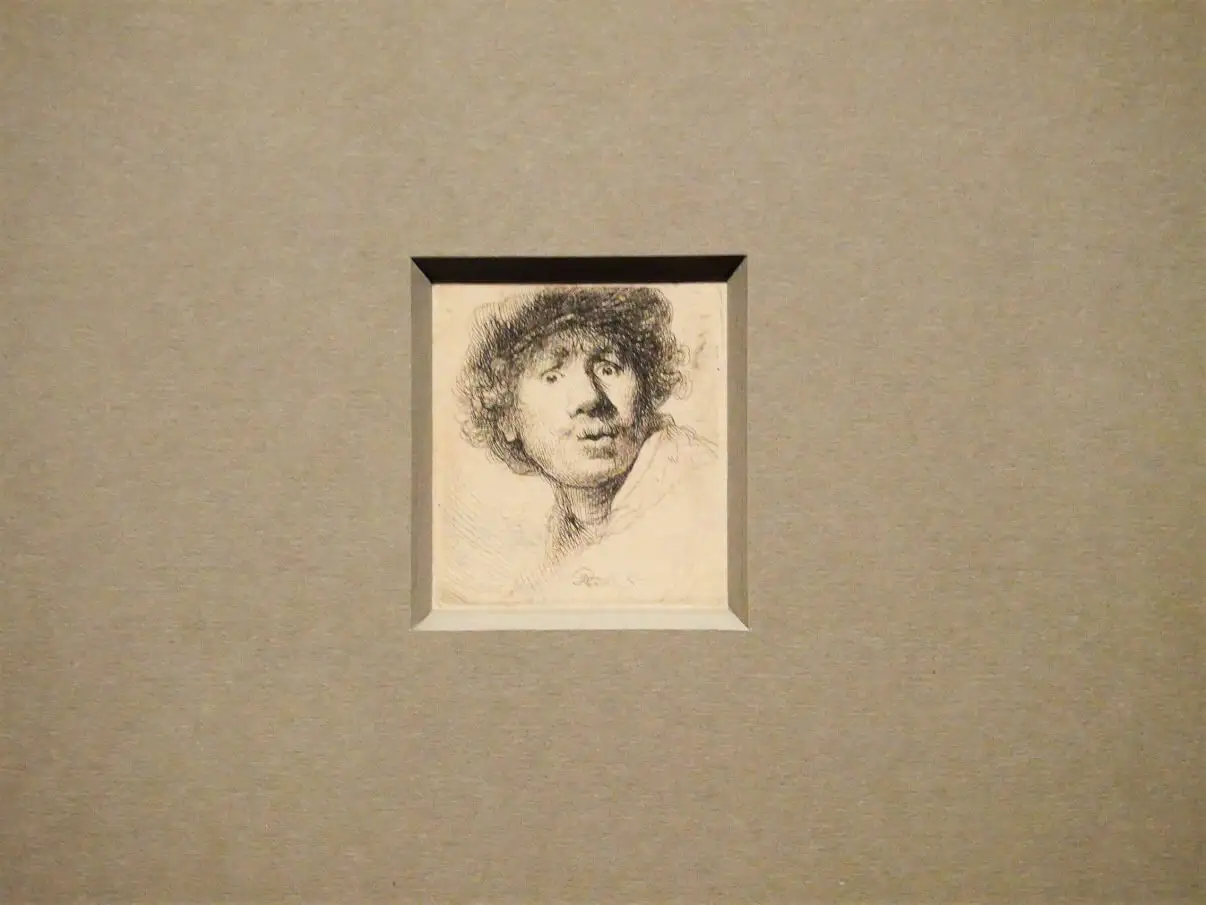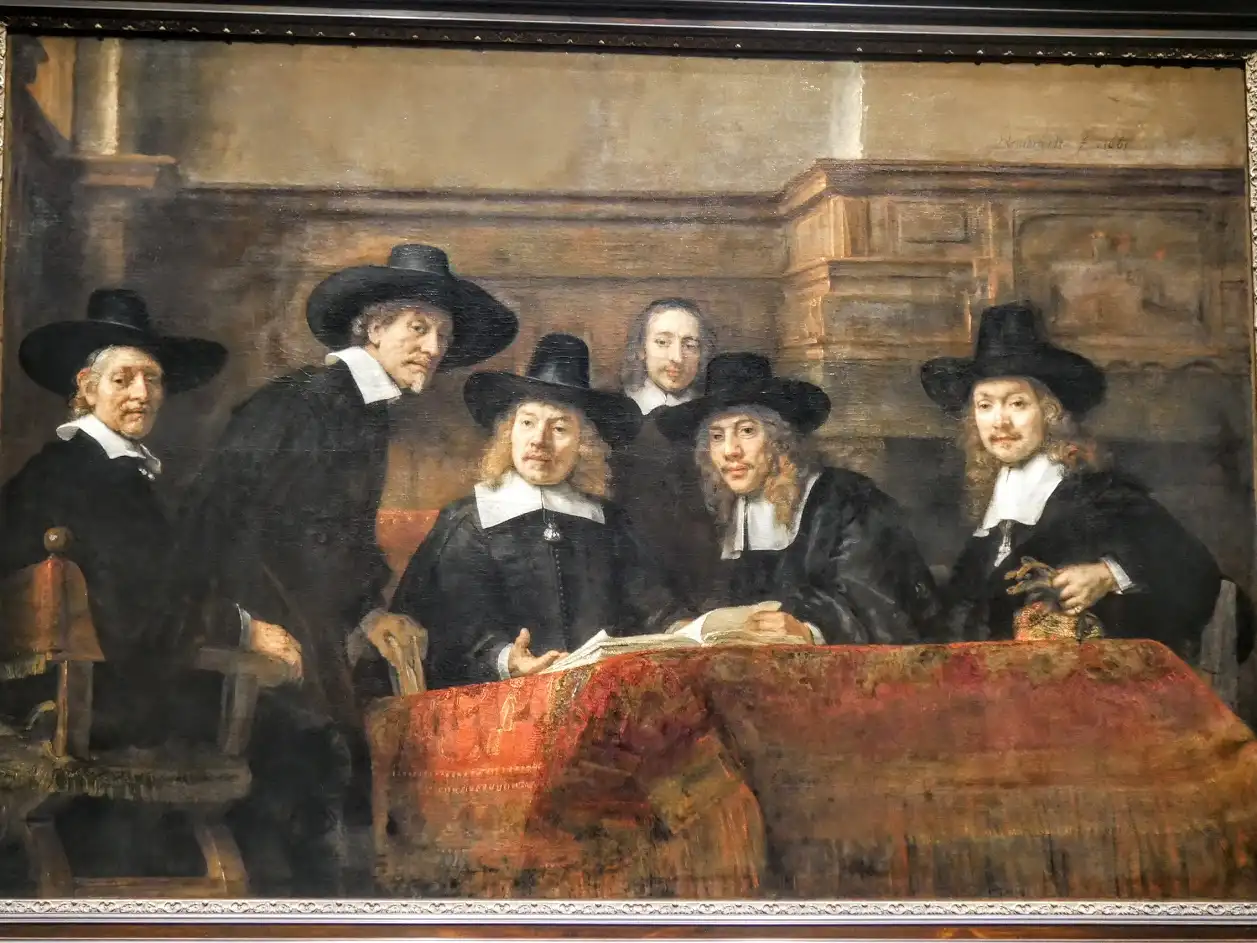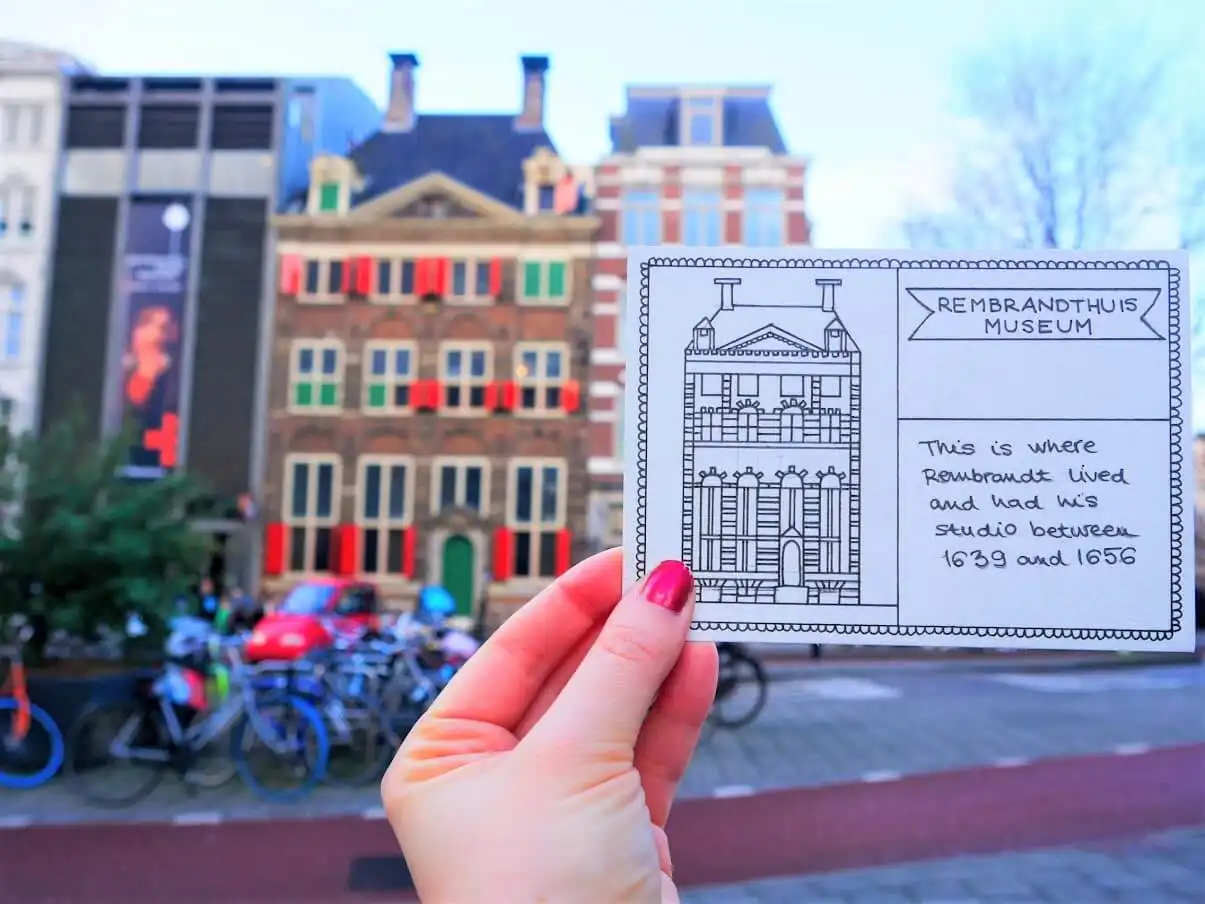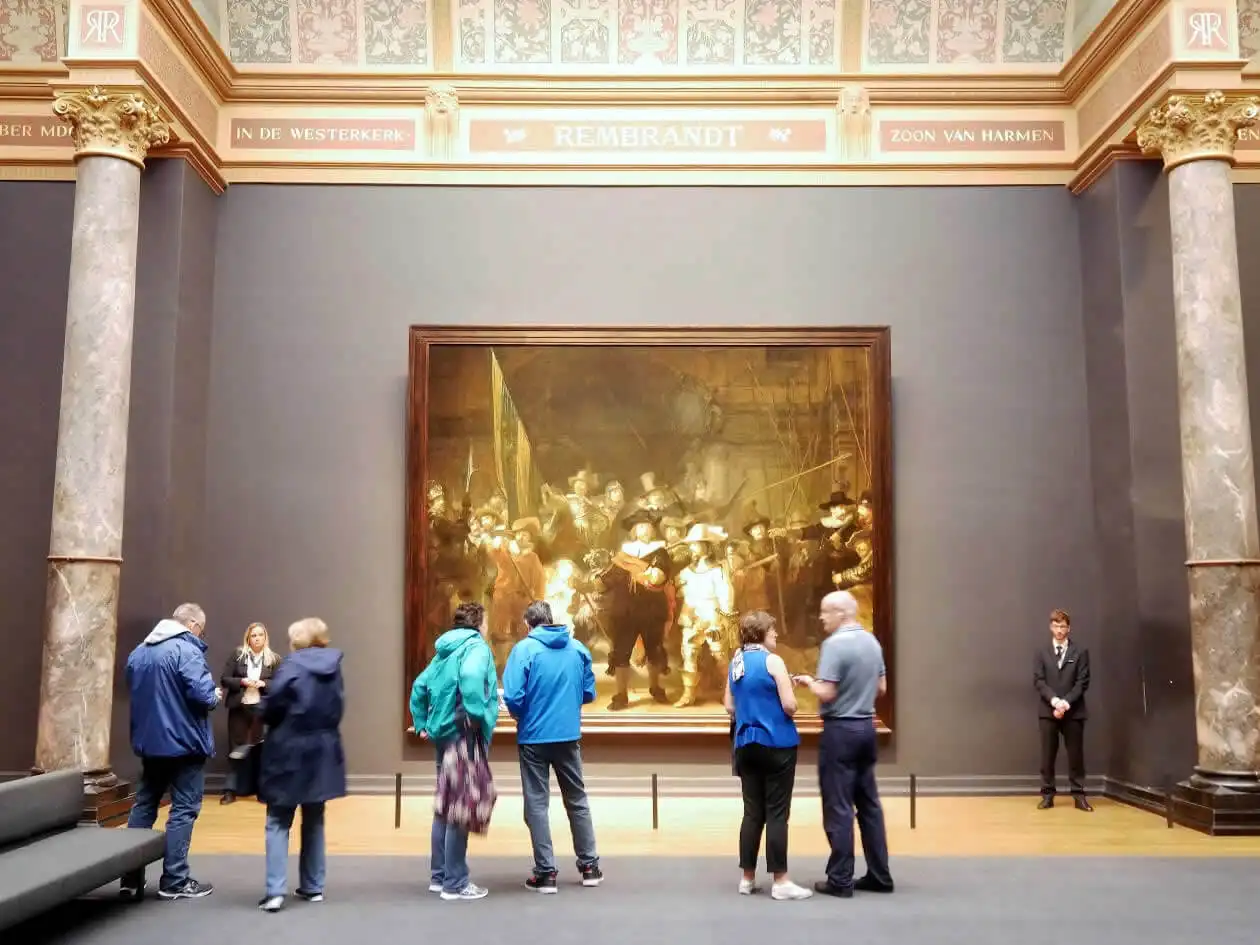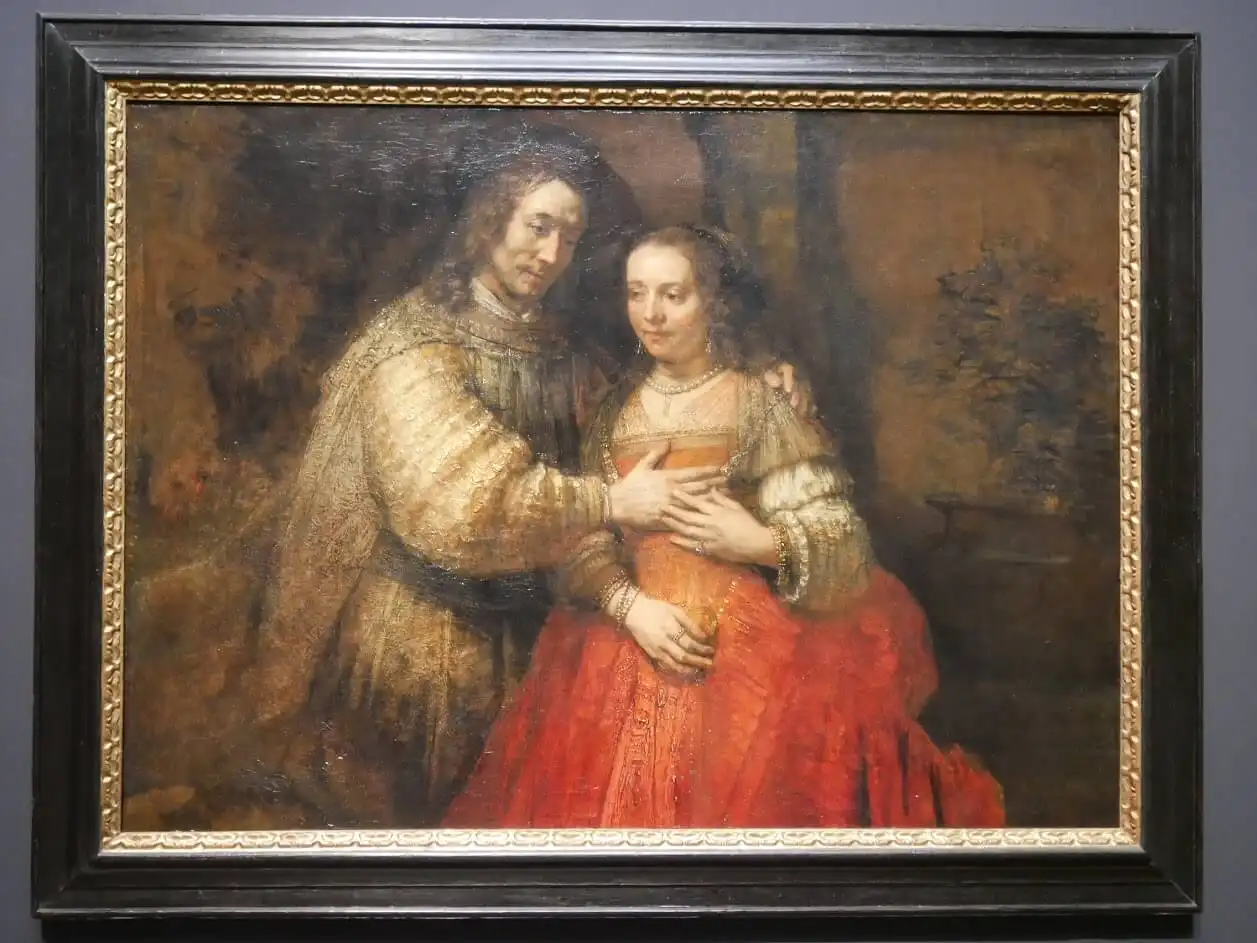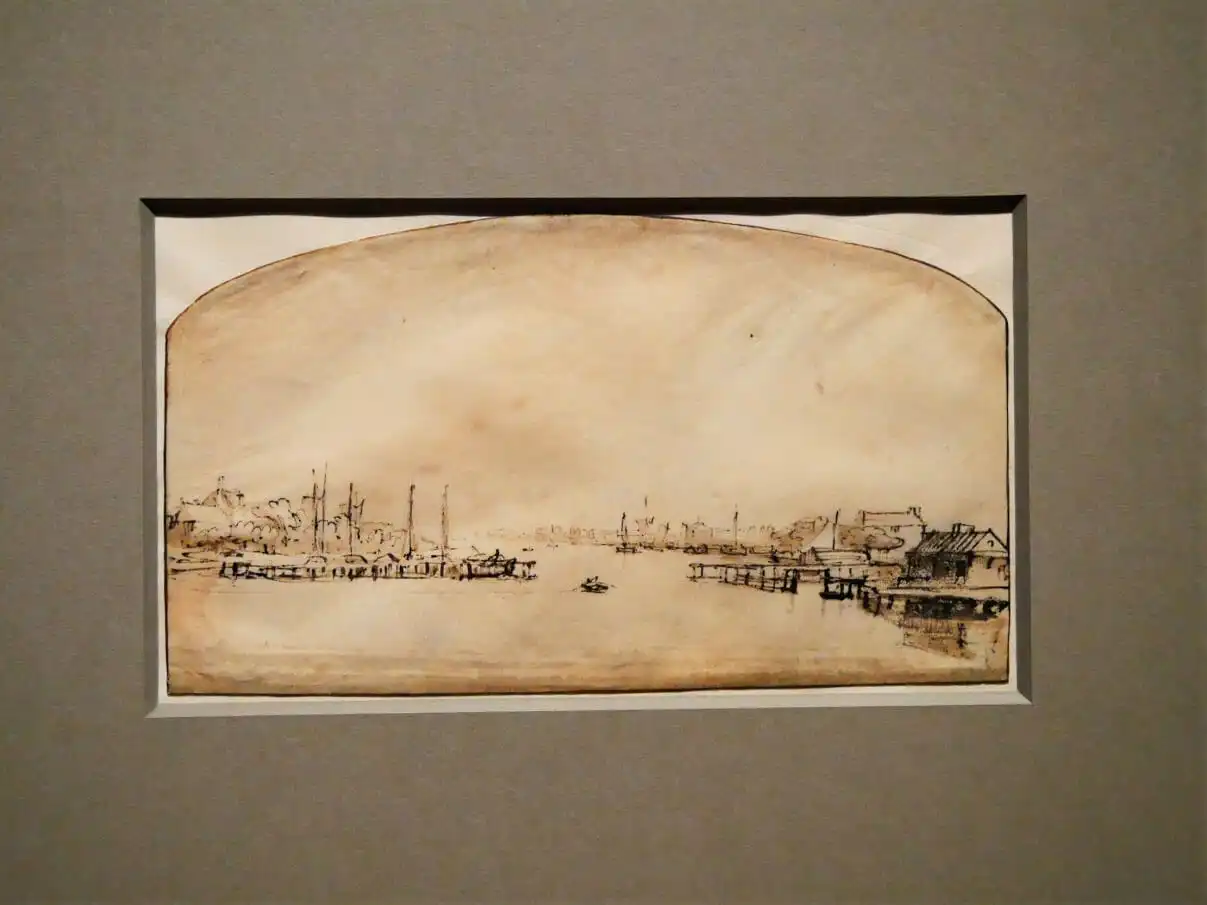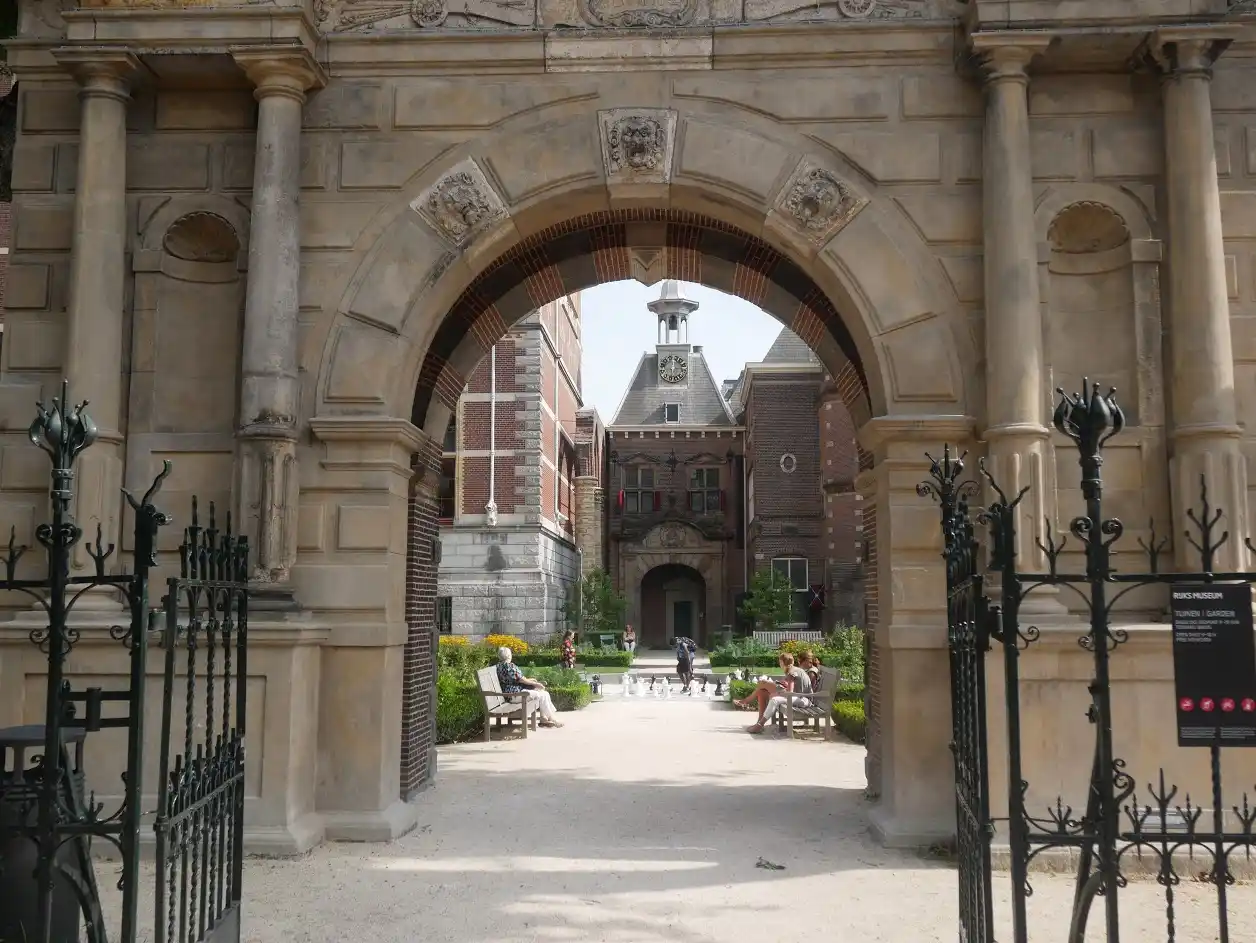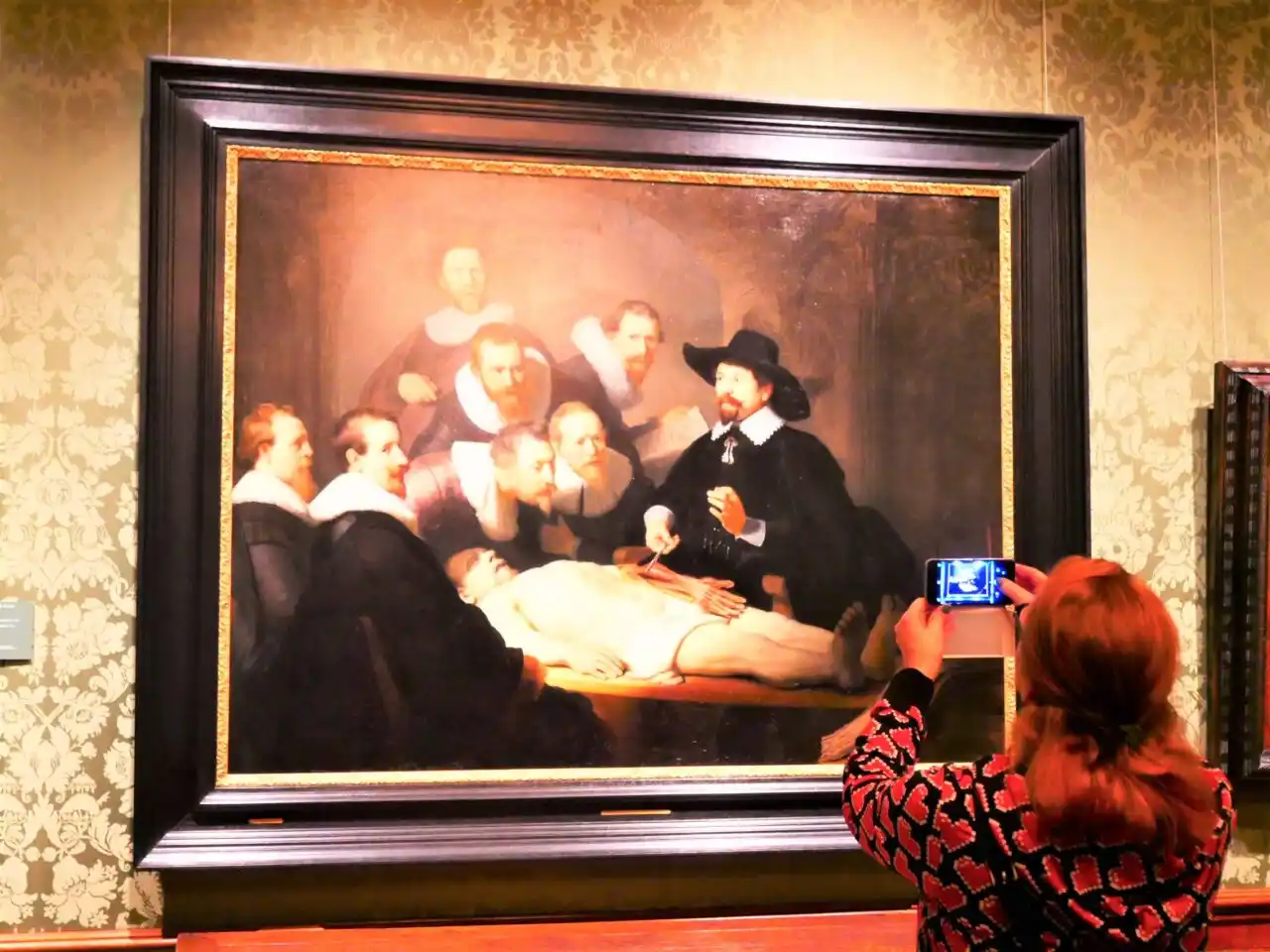Rembrandt van Rijn is one of the most well-known painters of all time. That Dutch artist is famous for depicting the light in his paintings, numerous portraits of his contemporaries and his exciting life. You’ll find his paintings in many museums around the world. To help you understand his work a bit better, here is a short art lesson about Rembrandt van Rijn.
Who was Rembrandt van Rijn?
Rembrandt van Rijn is one of the best known Dutch painters. He was born in the Dutch town of Leiden in 1606. However, after starting his painting career, he moved to Amsterdam, where he lived and worked until his death in 1669.
Rembrandt lived during the most prosperous time of Dutch history, during its Golden Ages in the 17th century. He was very talented and became successful very young. Because of his excellent painting skills, other painters called him a ‘Miracle of our time’.
He mostly portrayed wealthy Dutch merchants during the 17th century. They would pay him well to make a portrait of them or their family members.
Rembrandt is also well known for numerous paintings showing Biblical scenes, which weren’t that common in Dutch art of the 17th century. During the Dutch Golden Age, painters would specialise in one genre, like landscapes, portraits or everyday life scenes. However, Rembrandt experimented with numerous different genres and themes and is unique in that sense among his peers.
He was a very productive artist who created around 2400 drawings and etchings and between 300 and 600 paintings during his lifetime. The number is unclear because we are still unsure about the authorship of many paintings attributed to Rembrandt. However, the reason for such a massive production is that he had a big workshop with apprentices and other painters working with him.
Although today famous for his paintings, Rembrandt was more well known as an etcher during his lifetime. He is one of the first artists who started to create an art of it. He was also an art dealer and sold other painters’ artworks in his studio in Amsterdam.
⤷ Read more: Dutch Golden Age heritage sites in the Netherlands
Rembrandt’s personal life
Although born in Leiden, Rembrandt spent most of his life in Amsterdam. He moved there in 1631 and soon opened his art studio in the Dutch capital. Like the rest of the painters from his time, to be allowed to operate in Amsterdam, he had to become a member of the painters’ guild of Saint Luke in Amsterdam.
He married Saskia van Uylenburg who was a model on many of his paintings. They had four children together, but only one son, Titus, lived to adult age. His personal life was sadly filled with tragedies. Saskia also died very young when she was only thirty years old.
Although he was earning very well as a painter and art dealer, Rembrandt was spending beyond his means. So he went bankrupt in 1656.
He died in 1669 and was buried in Amsterdam’s Westerkerk. It’s the same church Anne Frank mentioned in her diary. She would listen to its bells from an annexe of the house in which she was hiding with her family, located very close to it. Rembrandt was buried as a poor man in a group tomb there, in an unmarked grave. Unfortunately, today we don’t know precisely where his grave is located.
⤷ Read more: Check out my app with self-guided tour Rembrandt in Amsterdam
What is Rembrandt van Rijn famous for?
Rembrandt van Rijn is famous for his portraits of wealthy Dutch merchants, numerous etchings, and the way he used the light in his artworks.
His most famous painting is ‘The Night Watch’, located at the Rijksmuseum in Amsterdam. Rembrandt received quite an excellent pay for it – 1,600 guilders (an average annual craftsman wage at that time would be around 300 guilders).
⤷ Read more: How to visit a museum right
What is Rembrandt’s style of painting?
Rembrandt was active in the 17th century during the Dutch Golden Age. His paintings are characterised by realism, earth pigments and muted colours. However, something he is a master of is the way he depicted light in his paintings. His artworks are often dramatic and marked by chiaroscuro, with the contrast between darker and lighter areas of the picture.
You can notice a difference between his earlier and later work. Earlier paintings are very detailed, while brush strokes on later ones are blurred. He often used ticker paint on those latest artworks.
Rembrandt in Amsterdam
Rembrandt spent most of his career as a painter in Amsterdam. Many places related to his life and work could still be seen around the city. From houses in which he lived in, places where he created his famous paintings to churches in which he got married or baptised his children, you’ll find them all there.
Rembrandt’s etchings and drawings are an excellent document of life in Amsterdam during the Dutch Golden Ages. We know what many places in the city used to look like because of his artworks. Although showing wealthy Dutch people in his paintings, he focused more on everyday life scenes and poorer people living in Amsterdam in his etchings.
Besides being a fantastic painter, he definitely had an essential role in documenting life in Amsterdam during that time.
⤷ Read more: Following the footsteps of Rembrandt in Amsterdam
Where to see Rembrandt’s paintings
Rijksmuseum in Amsterdam
Rijksmuseum is home to some of Rembrandt’s most famous paintings, including some of his self-portraits and genre scenes. The ‘Jewish Bride’ and a wedding portrait of Marten and Oopjen are among the most famous artworks there.
However, the star of the Rembrandt’s collection at the Rijksmuseum is the ‘Night Watch’. The famous painter worked on that painting for three years and revolutionised the way group portraits were made with it. Its size, numerous portraits of his contemporaries, the way he used the light, showed movement and included so much symbolism inside of it, make this painting one of the masterpieces of European art history.
⤷ Read more: 10 Things you didn’t know about the Rijksmuseum
Rembrandthuis Museum in Amsterdam
One of my favourite museums in Amsterdam, the Rembrandthuis Museum, is a place anyone willing to learn more about Rembrandt in the Netherlands should visit. It’s a place where he lived between 1639 and 1656.
The interior of the house is well preserved, so you can get a good idea of what it used to look like in the time of Rembrandt. And although you won’t see many of his paintings, you can see the majority of his drawings and etchings on display there.
Other European museums with Rembrandt’s paintings
Mauritshuis in Den Haag is another Dutch museum with a great collection of Rembrandt’s paintings. Besides some of his portraits and self-portraits, ‘The Anatomy Lesson of Dr Nicolaes Tulp’ is among the most famous of his artworks there.
The Hermitage Museum in Saint Petersburg, the Louvre Museum in Paris, Altes Pinakothek in Munich and the National Gallery in London have significant collections of Rembrandt’s work, as well.
Rembrandt created so many paintings during his life that it comes as no surprise you can find his artworks in numerous European museums. Hopefully, with this short art lesson about Rembrandt, you’ll enjoy his paintings even more during your next museum visit.
Have you seen any artworks made by Rembrandt van Rijn in European museums? What are your favourite Rembrandt paintings? Let me know in the comments below.


